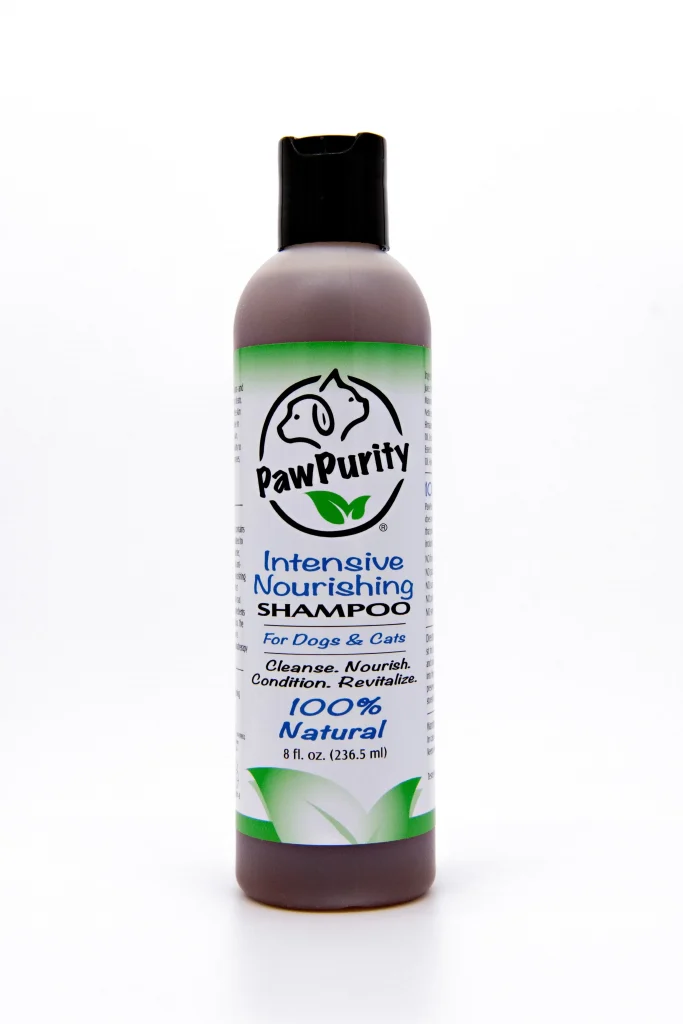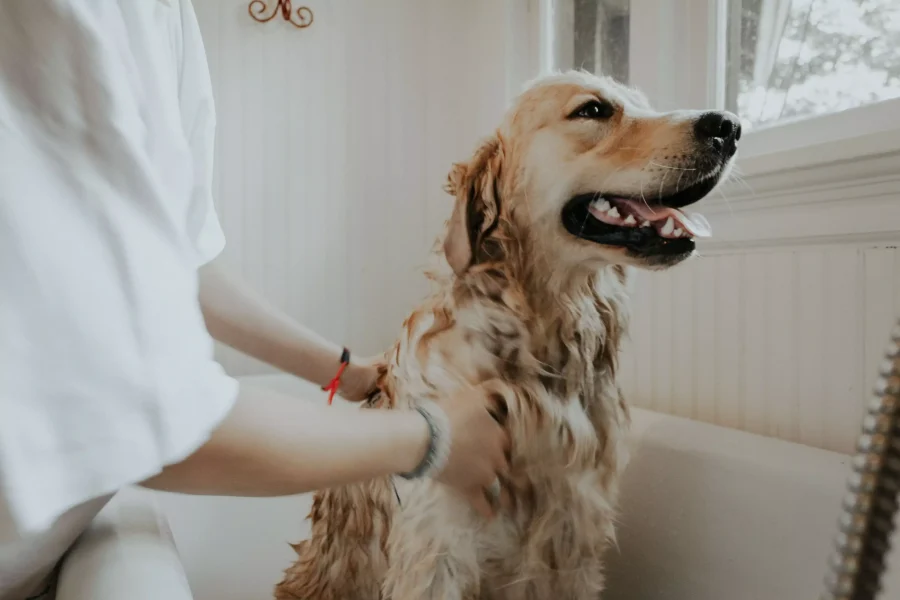Folliculitis in dogs is a common skin condition affecting hair follicles, resulting in red bumps and skin irritation. While this condition is usually not serious, it can be quite uncomfortable for your pet. If you’re looking for answers on how to treat this skin condition, then you’ve come to the right place. In this blog post, we will discuss the causes, symptoms, and treatments of folliculitis in dogs and how to prevent it from occurring in the future.
What is Folliculitis?
Folliculitis is an infection of the hair follicles in dogs. It occurs when bacteria enter and irritates the follicles, leading to a localized infection. Folliculitis can affect any part of the body, but it is most common on the legs, belly, face, and neck. The infection can range from mild to severe and, if left untreated, becomes a much more serious problem.
If you suspect your dog has folliculitis, it’s important to take them to the vet immediately. Your vet will be able to diagnose the condition and start them on the right course of treatment to help clear up the infection.
Types of Folliculitis in Dogs
There are several different types of folliculitis in dogs, which can be categorized based on the cause of the infection.
1. Bacterial Folliculitis:
This is the most common type of folliculitis in dogs and is caused by an infection with a bacterial pathogen such as Staphylococcus intermedius or Pseudomonas aeruginosa. Bacterial folliculitis can cause redness, swelling, and/or discharge in the affected area.
2. Fungal Folliculitis:
This type of folliculitis is caused by a fungal infection, usually Malassezia pachydermatis. This type of folliculitis can cause hair loss, scaly skin, and an odor from the affected area.
3. Demodectic Mange:
This type of folliculitis is caused by a mite called Demodex canis. The symptoms of demodectic mange include hair loss, bald patches, and scabs on the skin.
4. Alopecia X:
Also known as “black skin disease,” alopecia X is a condition where the hair on the dog’s body begins to thin out or fall out completely in circular patterns. This type of folliculitis can also cause darkening of the skin in the affected areas.
No matter what type of folliculitis your dog has, it is important to take them to the vet for proper diagnosis and treatment. Your vet will be able to identify the type of folliculitis and recommend an appropriate course of treatment to help your pup feel better and prevent further infection.
What Causes Folliculitis in Dogs?
Folliculitis in dogs is an inflammation of the hair follicles commonly caused by bacterial infections, environmental irritants, or parasites. It can also be caused by underlying medical issues such as;
- Allergies
- Autoimmune diseases
- Aggressive grooming
- Hypothyroidism
- Hormonal imbalances
- Poor nutrition
- Poor hygiene
- Obesity
In some cases, it is a result of improperly fitted collars that trap moisture or prevent air circulation around the neck area. By ensuring your pup’s dietary needs are met with the right balance of vitamins and minerals, keeping its coat healthy through regular brushing and bathing in a sulfate- and formaldehyde-preservative-free shampoo; and ensuring that your pet has comfortable accessories–you can help reduce the incidence of folliculitis flare-ups.
Signs of Folliculitis in Dogs
Folliculitis in dogs can be tricky to spot, but there are a few common signs you can look out for. First, it’s important to note that the primary symptom of folliculitis is the appearance of papules, pustules, and even hairless patches on the skin. Your pup may also display overall itchiness or discomfort due to this irritation. If you part your pup’s fur and take a closer look at the affected areas, you may see some of the following:
- Redness and/or swelling around hair follicles
- Pimples or pustules that look like little whiteheads
- Bald patches on the skin
- Greasy, yellowish crusts on the skin
- Severely itchy and inflamed skin
- Painful bumps in more severe cases
If you notice any of these signs, it’s important to seek veterinary care right away. If left untreated, folliculitis can worsen and potentially cause secondary skin infections or further complications.
How is Folliculitis Diagnosed?
Folliculitis can be difficult to diagnose since it can look similar to other skin diseases, such as mange. Your vet may take skin scrapings or cultures of the infected area to check for bacterial or fungal infections. In some cases, your vet may order a biopsy of the affected skin to rule out any underlying issues that could be causing the condition. Once the diagnosis is confirmed, your vet will discuss the best treatment option.
Is Folliculitis More Common in Some Dog Breeds?
Folliculitis is not more common in any particular breed of dog, but there are certain breeds that may be more prone to developing the condition due to the nature of their coats or skin type.
Breeds such as poodles, cocker spaniels, labradors, and shih tzus are more likely to develop folliculitis because of their thick, dense fur and/or curly coats. The most common cause of folliculitis in these breeds is a yeast infection, which can occur when a dog’s coat is allowed to become wet or matted, and bacteria and fungi are able to thrive.
Dogs with floppy ears or flat faces are also more prone to folliculitis, as the areas where the skin folds or creases can trap moisture and bacteria. Breeds with long hair and thick fur are also at risk, especially if the fur is matted and not brushed regularly.
To avoid the risk of your pet developing folliculitis, it is important to maintain regular grooming and bathing to keep your pet’s coat and skin healthy. Additionally, it is important to address any skin issues or ear infections promptly, as this can lead to further complications down the road. Taking proactive steps like these can help keep your pet’s coat healthy and free from folliculitis.
How to Treat Folliculitis in Dogs?
Treating folliculitis in dogs typically requires careful management of symptoms to prevent further infection.
Oral Treatments
Oral treatments have been found to be the most effective, even if they take a while. Antibiotics such as cephalexin, Clavamox, and ampicillin are usually prescribed to target bacterial infections like staphylococcus, but more persistent cases may need antifungal medication.
Topical Treatments
Topical treatments also form an important part of the protocol, often involving medicated wipes or baths that soothe the skin and contain antibacterial or antifungal components. Further evaluation may also be required to ascertain underlying conditions like allergies or sensitivities causing flare-ups.
Home Remedies for Folliculitis
- Make a hot compress with a clean cloth soaked in warm water and apply it to the affected area several times a day. The heat will increase circulation, which helps reduce inflammation and speed healing.
- Use a gentle nourishing anti-inflammatory shampoo that contains antibacterial and antifungal ingredients, such as aloe vera, yucca root, horsetail, comfrey, and mullein. Massage the shampoo into your dog’s coat and let it sit for 10 minutes before rinsing.
- Create an oatmeal bath for your dog by grinding up about 2 cups of oatmeal into a powder and adding it to a tub of lukewarm water. Let your dog soak in the bath for 10 minutes to soothe any itching and help reduce inflammation.
- Supplement your dog’s diet with omega-3 fatty acids like fish oil can help improve skin health and boost their immune system.
Following these home remedies for folliculitis in dogs can help your pup feel better and speed up the healing process. However, if your dog’s symptoms do not improve or worsen, contact your veterinarian immediately, as they may require more aggressive treatment.
How to Prevent Folliculitis in Dogs?
Regular grooming, especially brushing to remove dirt and debris that can trap moisture around the skin, is key in helping to keep your dog’s coat clean and healthy.
Additionally, avoid excessive bathing as this may lead to dry skin and the overgrowth of bacteria, which can cause inflammation.
If you notice any redness or bumps on your pet’s skin, you can try the home remedies first. If it continues to worsen, see a vet. With proper hygiene and care, you can help ensure the health of your pup’s skin!
FAQs
Can folliculitis in dogs be cured?
Veterinarians may diagnose folliculitis through physical examination and visual inspection, as well as conducting fungal or bacterial cultures to identify the cause of infection. Treatments for folliculitis typically include oral antibiotics to control secondary bacterial infections, topical antifungal medications to reduce fungal growth, and steroids to help reduce inflammation.
In some cases, surgical treatments such as draining abscesses or clipping matted fur may be necessary to effectively treat a dog suffering from folliculitis.
Is folliculitis in dogs dangerous?
It can range in severity from mild irritation to severe infections, and if left untreated, can eventually lead to permanent hair loss or even possible systemic infection. In mild cases, simple topical therapies may be enough to treat the condition. However, more serious bacterial infections may require antibiotics prescribed by a veterinarian.
In cases of deep-seated folliculitis, surgery or laser treatments may be beneficial in reducing the risk of reinfection. As it is essential to seek proper medical care for a dog suffering from folliculitis, pet owners should not hesitate to consult with their veterinarian to avoid long-term issues as well as assure optimal health and well-being for their pets.
Can folliculitis spread in dogs?
Folliculitis is a common skin condition in dogs that can be transmitted through contact with other animals or contaminated items. In some cases, the condition may spread, leading to fur loss or discomfort around the affected areas.
Owners should monitor their pet’s environment, as folliculitis can spread if an animal comes into contact with bacteria from another infected dog. Early diagnosis and treatment are essential in avoiding this inflammatory skin condition transmission. Consulting a veterinarian is recommended so any medical issues associated with folliculitis can be identified and treated quickly.















